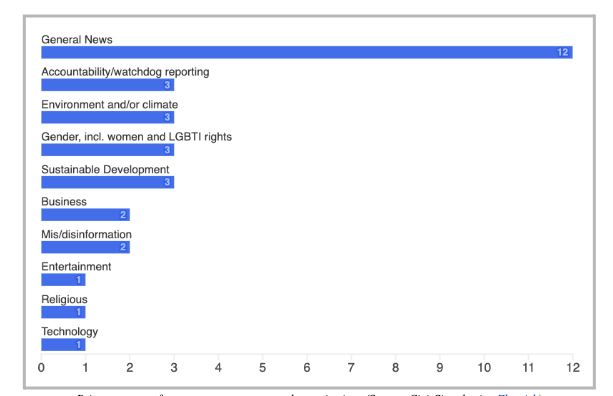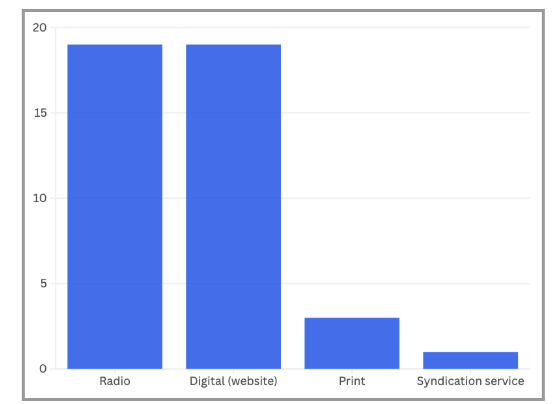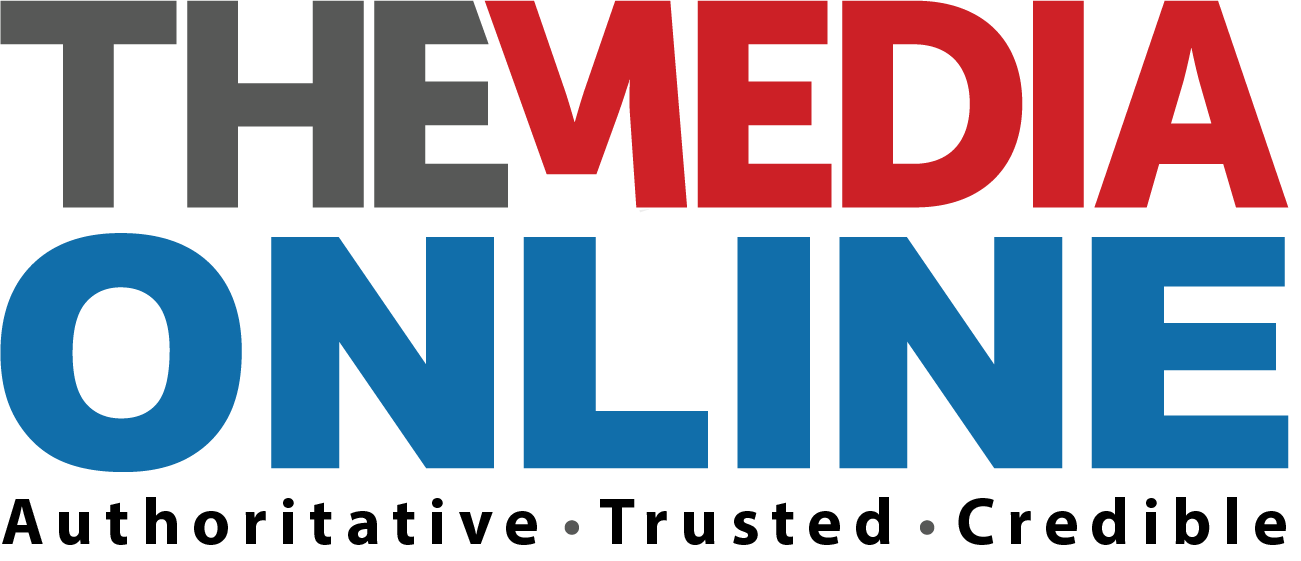African community media outlets are shifting from hyperlocal coverage to digital storytelling, reshaping their editorial focus and redefining ‘community’ in the process.
What is community media today?
‘Community media’ has never had a fixed meaning. In theory, it refers to media created by and for a particular geographic community or interest-based community. In practice, the lines are blurrier.
Some commercial outlets, such as members of South Africa’s Association of Independent Publishers (AIP), are recognised as community media because of their grassroots operations. But so are local papers owned by large media conglomerates, such as Caxton Media, which has branded many local print titles as community platforms because of the geographical community they serve. This self-positioning has sparked a debate whether these outlets truly represent communities, or leverage localisation for profit.
This evolving understanding of what defines community media and how it continues to change is echoed in the 2025 #MediaMeltdown survey by CivicSignal, Code for Africa’s media research programme, which surveyed 42 community media organisations across 11 African countries between March and May 2025.
From general-interest to mission-driven content
Historically, community media outlets reported on local issues under a general-interest mandate. But as resources are stretched and audiences are fragmented, this model is buckling under pressure.
According to CivicSignal’s data, many community media organisations are now concentrating on specific themes that resonate with the lived experiences and identities of their audiences, such as gender justice, public health, youth, and climate resilience.
In Kenya, for example, a youth-run station called Bus Radio in Kajiado is creating programming focused on climate change: ‘We use local language, integrate songs, dramas and storytelling to spread the message on the effects of climate change,’ explained one team member.
In Nigeria, Naija Feminists Media, produces daily content on women’s rights and intersectionality via WhatsApp and Instagram. These outlets aren’t only filling information gaps; they are building community consciousness and civic agency.
While general news remains of interest to communities, it no longer necessarily dominates the editorial agenda. CivicSignal’s data shows that 38.7% of respondents with a specialist editorial focus still cover general news. This suggests a pivot, not an abandonment, of traditional roles. It also reflects a trend toward deliberate editorial repositioning from reactive coverage to proactive agenda-setting.

Primary content focus areas among surveyed organisations (Source: CivicSignal using Flourish)
From FM to Facebook: the shifting strategy of platforms
Another major shift of transformation noted from the survey was platform strategy. Many outlets are moving from analogue to digital-first approaches – not because they want to but because they must. Maintaining radio transmitters, printing presses and distribution systems is becoming unaffordable, while mobile-first users are going online.

Distribution of publishing mediums among 42 surveyed organisations (Source: CivicSignal using Flourish)
CivicSignal’s survey shows that radio and websites are now tied as the primary channels for community media, with 45% of respondents using each. It’s a dual reality: in under-connected areas, radio dominates, while digital platforms are becoming indispensable in urban and youth-focused contexts.
Hybrid models are also emerging. Many outlets pair FM broadcasts with livestreams, podcasts and WhatsApp news briefs as they adapt to meet audiences where they are.
An equally important dimension of community media’s reinvention relates to changing news‐consumption habits. The Reuters Institute for the Study of Journalism’s 2025 Digital News Report shows that in countries like Kenya, Nigeria, and South Africa, social media has overtaken television and print as the primary source of news. But trust is low. More than 70% of respondents struggle to tell real news from fake news online. A growing avoid the news altogether due to emotional fatigue.
In this environment, community media outlets have a unique advantage. Their hyperlocal roots and participatory ethos position them to deliver credible information on platforms people already use.
Participation remains the heartbeat with collaboration increasingly emphasised
Even as content and platforms evolve, one principle remains constant: participation. Community media is still, at its heart, about communities telling their own stories.
However, telling these stories sustainably requires collaboration. Insights from Sustainability Model Report, produced by South Africa’s Media Development and Diversity Agency (MDDA), show a rise in shared-service models, where outlets pool resources for audience analytics, marketing, and distribution.
At the same time, there is a growing shift toward monetising digital platforms through events, memberships, branded content and social media activations.
This shift complements the broader editorial pivot toward specialist content. However, the report also surfaces persistent skills gaps, particularly in digital marketing, data analytics and business development.
So what is community media becoming?
It is becoming more mission-driven, more platform-diverse, more participatory, and more rooted in identity and experience than geography alone.
It’s also becoming harder to define. Community media is inherently fluid, shaped by context and constantly evolving. The ongoing debates surrounding this sector, ranging from editorial independence versus financial sustainability, to public interest versus donor influence, to innovation versus accessibility, are not confined to academic or policy circles.
As the digital landscape and economic environment continue to evolve, so too will the form and function of community media.
This blog was written by Nomshado Lubisi, peer reviewed by Dr Sandra Roberts, and edited by Amanda Strydom and Kiprotich Koros.
The #MediaMeltdown community research partners are CivicSignal, a Code for Africa (CfA) initiative, Africa Media Hub at Strathmore University and the Kenya Community Media Network (KCOMNET) in Kenya, the Association of Independent Publishers (AIP), Media Development and Diversity Agency (MDDA) and National Community Radio Forum (NCRF) in South Africa, Media Rights Agenda (MRA) in Nigeria, Namibia Media Trust (NMT), and EMPOWERHOUSE.
CfA is the continent’s largest nonprofit network of digital innovation and civic technology labs, with teams in 27 African countries.
CfA’s labs build digital democracy solutions that give citizens unfettered access to actionable information that empowers them to make informed decisions, and which strengthens civic engagement for improved public governance and accountability.














